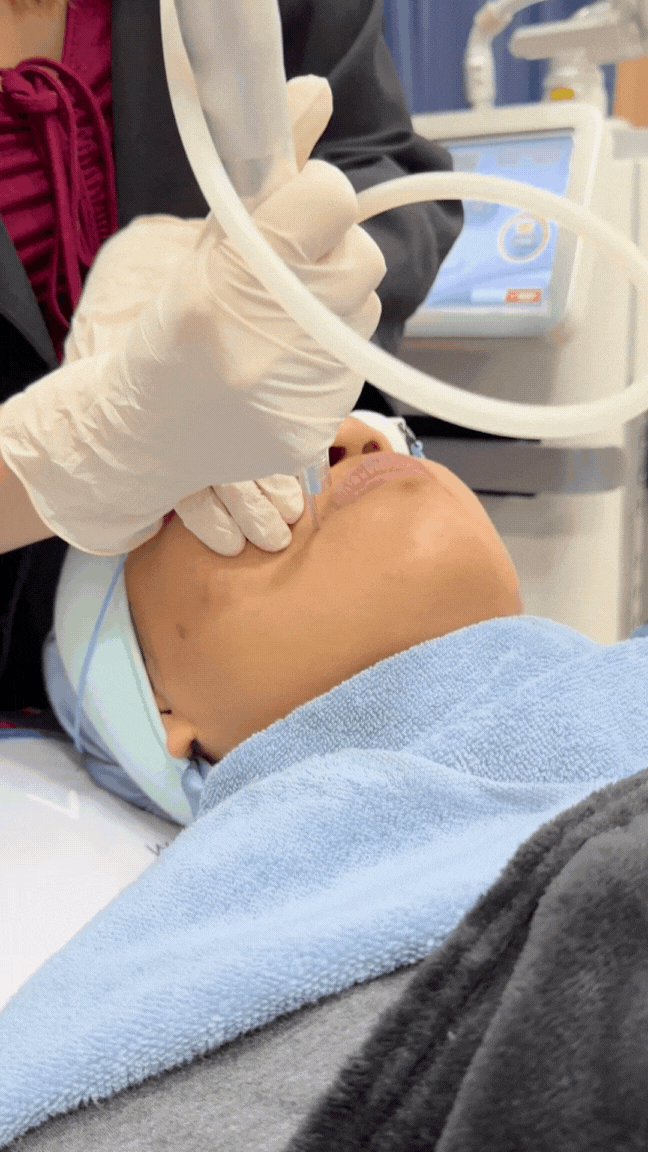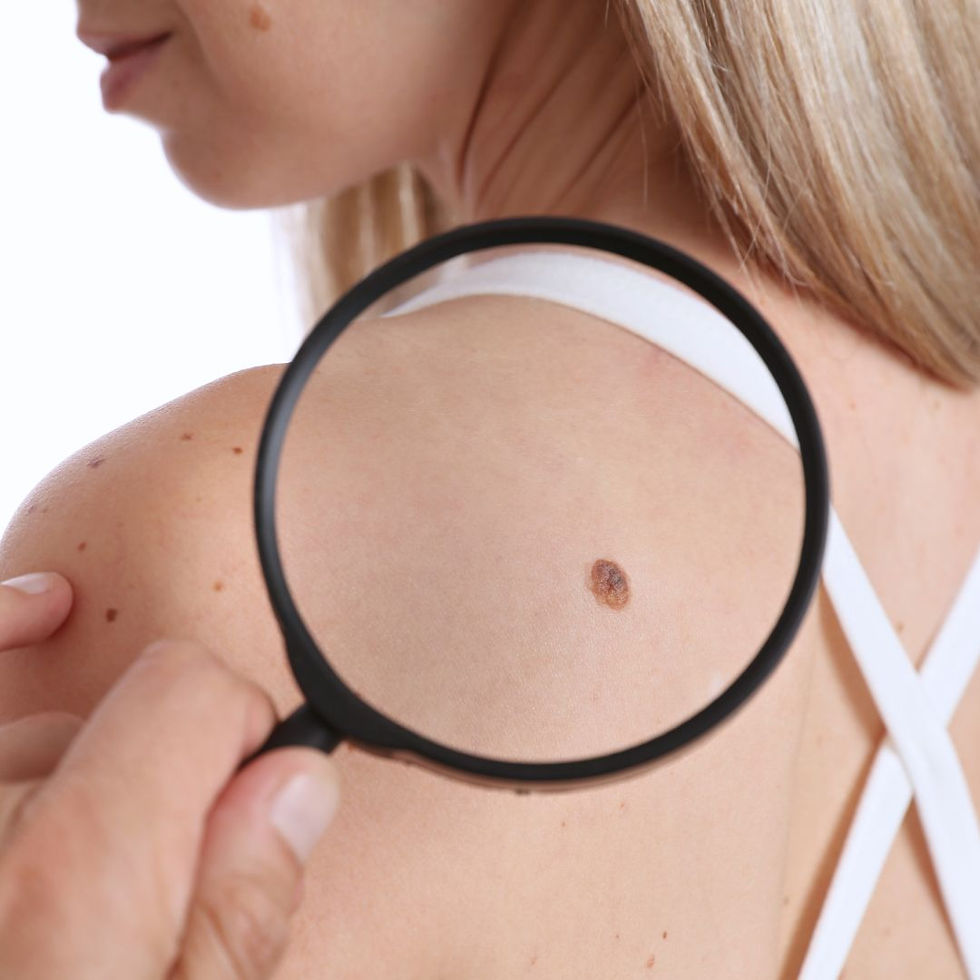304 Orchard Road, #05-29, Singapore 238863
Introduction to Mole Removal

Mole removal in Singapore is carried out for both medical and cosmetic reasons, such as reducing irritation or eliminating aesthetically bothersome moles that may cause discomfort. Laser treatment and surgical excision are common techniques used. A mole removal consultation helps assess suspicious moles or potential skin cancer.
The chosen mole removal procedure depends on the mole site, skin cells involved, and the likelihood of cancerous moles. The demand for mole removal in Singapore continues to grow, especially among individuals seeking both medical and aesthetic solutions.
Understanding Moles
Moles are clusters of pigmented cells or pigment cells found on the skin. While most moles are harmless, changes could indicate atypical moles or skin cancers. Understanding mole's characteristics helps in selecting an effective mole removal treatment and determining whether to monitor, excise, or remove moles due to potential risks.
Mole Removal Procedure

A mole removal medical assessment is necessary to evaluate the mole’s depth and structure. Mole removal surgery, such as surgical excision, is typically recommended for deeper moles or those suspected of being cancerous. Complete removal is crucial in surgical procedures to excise the mole and surrounding tissue, ensuring proper cosmetic and medical outcomes.
If a mole is deemed suspicious, an excisional skin biopsy will be conducted, during which the entire mole is removed for thorough examination. Laser removal is commonly used for smaller, unwanted moles and offers reduced irritation while preserving the surrounding skin. The excised tissue is then sent for histological examination to detect any signs of malignancy. Complete mole removal depends on the removal method and treated area
Mole Removal in Singapore

Singapore mole removal services are available at various clinics offering mole removal procedures like surgical excision and laser mole removal. Most moles can be removed in a single session, but some cases may necessitate two to three mole removal sessions, particularly with laser or shave excisions. The mole removal Singapore price ranges depending on the removal method, mole size, and clinic. Always undergo a mole removal consultation to assess mole type and obtain a reliable estimate for removal Singapore procedures.
Effective Mole Removal
Complete mole removal requires targeting both visible tissue and underlying pigmented mole cells to avoid incomplete removal. Surgical excision commonly performed on larger or raised moles ensures thorough removal. Laser and cauterisation procedures can be more suitable for mole removal techniques with minimal scarring and downtime. Removal of most moles can also enhance skin appearance and reduce future complications removing moles.
Types of Moles












Regular Moles (Nevi):
Small or medium-sized, round or oval moles, usually tan, brown, or pink, and typically harmless.
Funny Moles (Atypical Moles):
Larger, normal moles, with irregular shapes and colors, requiring monitoring due to a slightly higher risk of turning cancerous.
Birth Moles (Congenital Moles):
Moles present at birth, which may carry a higher risk of developing certain types of skin cancer if large.
New Moles (Acquired Moles):
Develop after birth, usually smaller with a regular shape and color.
Halo Moles:
Moles with a lighter circle around them, often not a cause for concern.
Spitz Moles:
More prominent moles that can resemble skin cancer, more common in children but can occur in adults.
Moles include congenital moles, atypical moles, and normal moles. Congenital moles appear at birth and may pose a higher risk of developing into skin cancer. Atypical moles may exhibit asymmetry or irregular edges. Identifying such moles through mole removal medical assessment is important in selecting whether to monitor or proceed with removal methods, especially when dealing with suspicious skin growths.
Mole Removal Aftercare
After mole removal, following proper care instructions helps minimise infection risk and ensures the treated area heals naturally. Laser and cauterisation wounds typically require minimal care beyond a protective covering once bleeding stops. This includes applying moisturiser or silicone gel, avoiding sun exposure, and protecting the area with anaesthetic or dressing materials if required. After bleeding ceases, wounds resulting from laser and cauterisation procedures may require only a protective covering. Sun protection prevents darkening and scarring around the mole site.
Post-Procedure Care
After mole removal, it's important to follow the prescribed aftercare routine for a smooth recovery. Keep the treated area clean and dry, apply any prescribed creams or ointments, and avoid sun exposure. Attend follow-up appointments to monitor healing and remove stitches if needed. Following these steps will help minimize complications and ensure the best results from your treatment.
Leave and Recovery
Recovery time for mole removal varies based on the method and individual health. Typically, patients need a few days to a week off work to allow the treated area to heal. It's important to avoid strenuous activities and heavy lifting during this period. Most patients can return to normal activities within 1-2 weeks, though procedures like surgical excision may require a longer recovery than laser removal.
Laser Mole Removal
.jpg)
Cosmetic removal is used to remove moles that are aesthetically bothersome but non-cancerous. This method targets pigmented skin cells while preserving surrounding tissue. Laser removal suitable for smaller, flat moles provides smooth skin texture and reduced downtime. The laser mole removal technique avoids damage to healthy skin cells.
Conclusion
Mole removal is a common procedure in Singapore for both medical and aesthetic reasons. With options like laser removal, surgical excision, and cauterisation, patients can choose the method that best suits their needs. Understanding the causes, types, and removal techniques of moles helps in making informed decisions. Consulting with a qualified doctor is essential to determine the most appropriate treatment and ensure a smooth recovery. With proper aftercare, patients can achieve clear skin and reduce their risk of skin cancer. Always prioritize skin health and consult a professional for any mole or skin cancer concerns.
FAQ
Can your GP remove moles?
Yes, however people often choose aesthetic clinics over GPs for mole removal due to access to specialised procedures like laser treatment, greater focus on cosmetic outcomes, and tailored treatment plans.
How expensive is it to get rid of moles?
It depends on the mole's size, location, and number of sessions needed—most moles are removed in a single session, and costs increase with larger or multiple moles.
How painful is mole removal?
Mole removal is generally not painful, as numbing cream is applied before procedures like laser mole removal.
Can I remove a mole without surgery?
Yes, laser mole removal is a non-surgical option for certain types of moles.
Can I remove my own mole?
No, removing moles yourself is unsafe and not recommended.
Do moles get bigger with age?
Yes, some moles can grow larger or change over time.
Does removing a mole leave a scar?
Yes, mole removal may leave a scar depending on the method and mole size.
Can moles go away on their own?
Some moles may fade, but most do not go away without treatment.
Can you get rid of moles permanently?
Yes, complete mole removal can permanently eliminate the mole.
Do moles grow back after removal?
An excised mole can grow back if not completely removed.
How to shrink a mole naturally?
There is no medically proven way to shrink moles naturally.
Is it OK to scrape off a mole?
No, scraping off a mole is dangerous and can lead to infection or complications.
Meet our Doctor, Dr. Sy Li Lin
Dr. Sy Li Lin is an experienced aesthetic doctor with 12 years of experience and counting, who has performed a vast number of lasers and injectables, and holds numerous prestigious certifications, offering evidence-based and personalised treatments to clients based on their individual concerns and aesthetic goals, drawing from her extensive clinical background and beauty pageant experience. She is the Medical Director at Fundamental Aesthetic Medical Clinic
Why choose us?
Focused After Care
Modern Facilities
MOH-Certified Doctors
500, 000 lasers performed
50, 000 injectables performed.
23 years of doctor experience combined
Experts in pigmentation treatment, anti-aging, acne reduction.
Customised solution for every individual.

